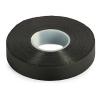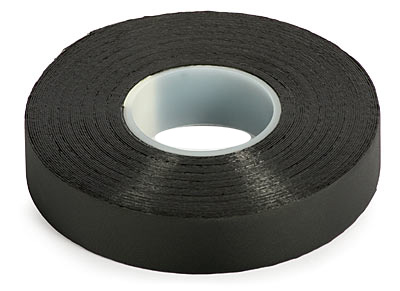-
€

Self-vulcanizing tape ideal for the insulation of antenna connectors.
- Length: 10 m
- Width: 19 mm
- Thickness: 0.6 mm
The self-vulcanizing tape made on the basis of polyisobutyl rubber is widely used for sealing cable connections in both internal and external installations. The correct positioning of the tape ensures a complete water resistance for fresh and sea water in a very wide temperature range.
The self-vulcanizing tape is the basic protection of teletechnical and energy connections, especially in external conditions:
- Connections of coaxial cables on F connectors
- CCTV cable connections on BNC and F connectors
- Computer twisted pair connections
- Connections of coaxial cables in WLAN networks made on N, SMA, SMA / RP and other connectors
- Connections of coaxial cables in WLAN networks for external antennas or access points on N, SMA / RP connectors
Distinguishing features
- After the application, the vulcanisation process takes place automatically
- Large operating temperature range -40 ... + 90 ° C
- Can be used for many types of rubber and cable insulation materials (including: PE, PVC, butyl, neoprene)
- High resistance to the prolonged immersion in water and excellent ozone resistance
- Easy removal of the insulation without leaving marks on the surface - ideal for temporary applications
- Delivered with a plastic spacer, which must be removed before applying the tape.
The tape does not have any glue, the sealing of the connection is the result of the vulcanisation of the subsequent layers of the tape. The surface on which the tape is applied must be: dry, not covered, not greased. In order for the self-vulcanisation process to proceed correctly, the ambient temperature should be positive. The higher it is, the faster the process takes place. At room temperature,the full vulcanization occurs after 24 hours. The final effect is obtaining a uniform (without bubbles of air and water) cover, tightly adhering to the surface. The tape can not be unwrapped and the only way to remove it is a longitudinal incision. The tape does not get dirty on the surface and does not react with reactions.
APPLICATION:
- Securing the wiring connections
- Securing the connection of cable connections in internal and external devices
- Increasing the thickness of the insulating layer for better mechanical protection of the cable
- Securing steel pipes against corrosion
- Wrapping tool holders for electrical insulation and increasing adhesion,
- Replacing old damages or improper insulation materials.
The correct tape application
The surfaces to which the tape is applied should be clean, dry, free of dust, grease, oil and other impurities.
The correct application consists in wrapping (without a protective film) with such a measure that the tape narrows to 2/3 of its width and the subsequent layers are laid at the 50% overlap. This guarantees strict compliance with the secured item and subsequent layers of the tape. The tension when wrapping is very important because it guarantees the correct adhesion force. If the layers are strictly detrimental, the self-vulcanization topcoat will proceed properly and ensure a tightness between the wrapped surface and the tape. Depending on the ambient temperature within a few hours, vulcanisation occurs to itself, but not to the ground.
The self-vulcanizing tape is sold in rolls. To prevent vulcanization in the packaging, the tape is wound with a separator of composite material. Each roll has a factory-packaged unit that ensures freshness for 1 year.






 Polski
Polski English
English Italiano
Italiano Español
Español Čeština
Čeština Српски
Српски Deutsch
Deutsch Ελληνικά
Ελληνικά Slovenský
Slovenský




